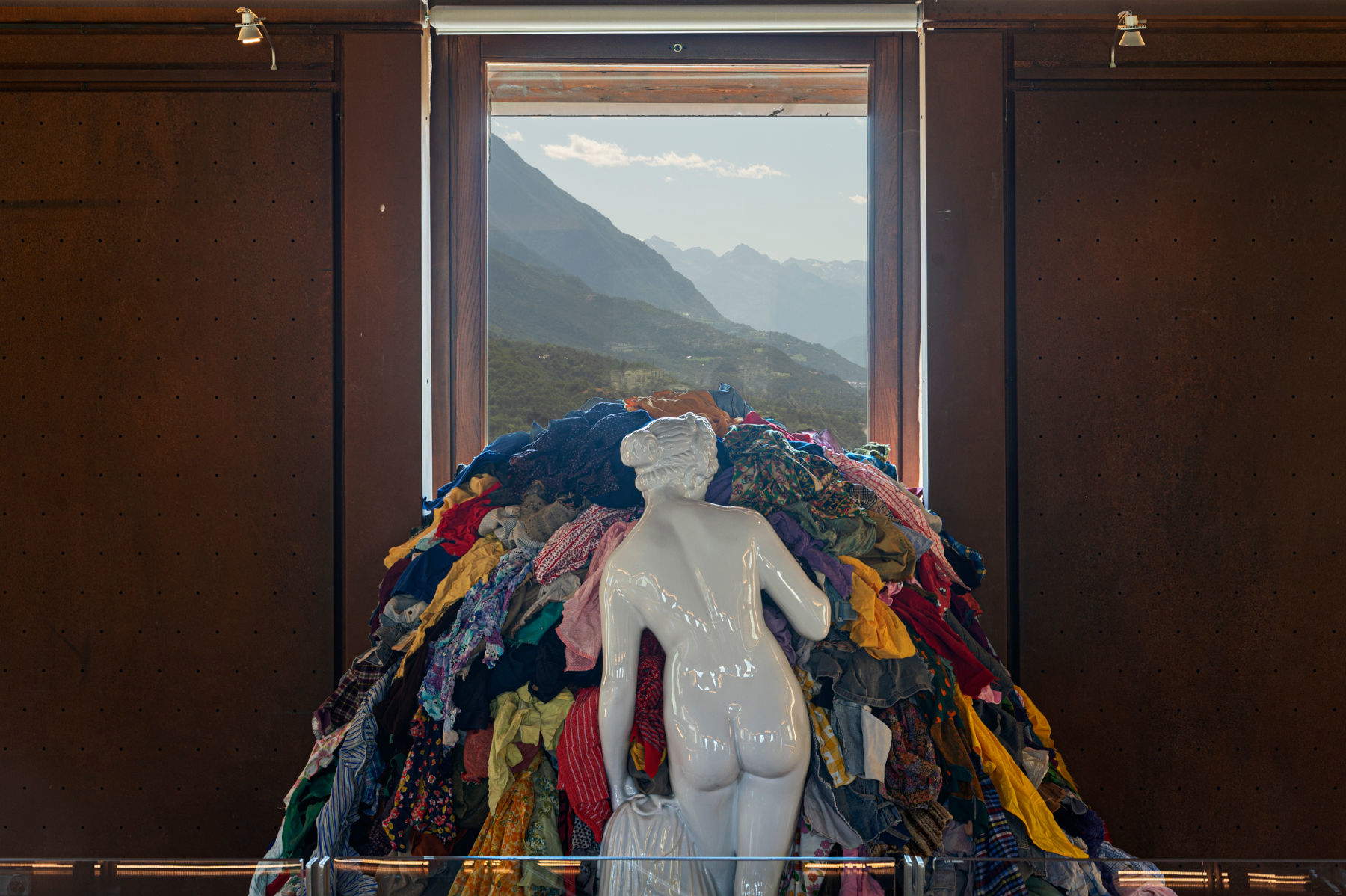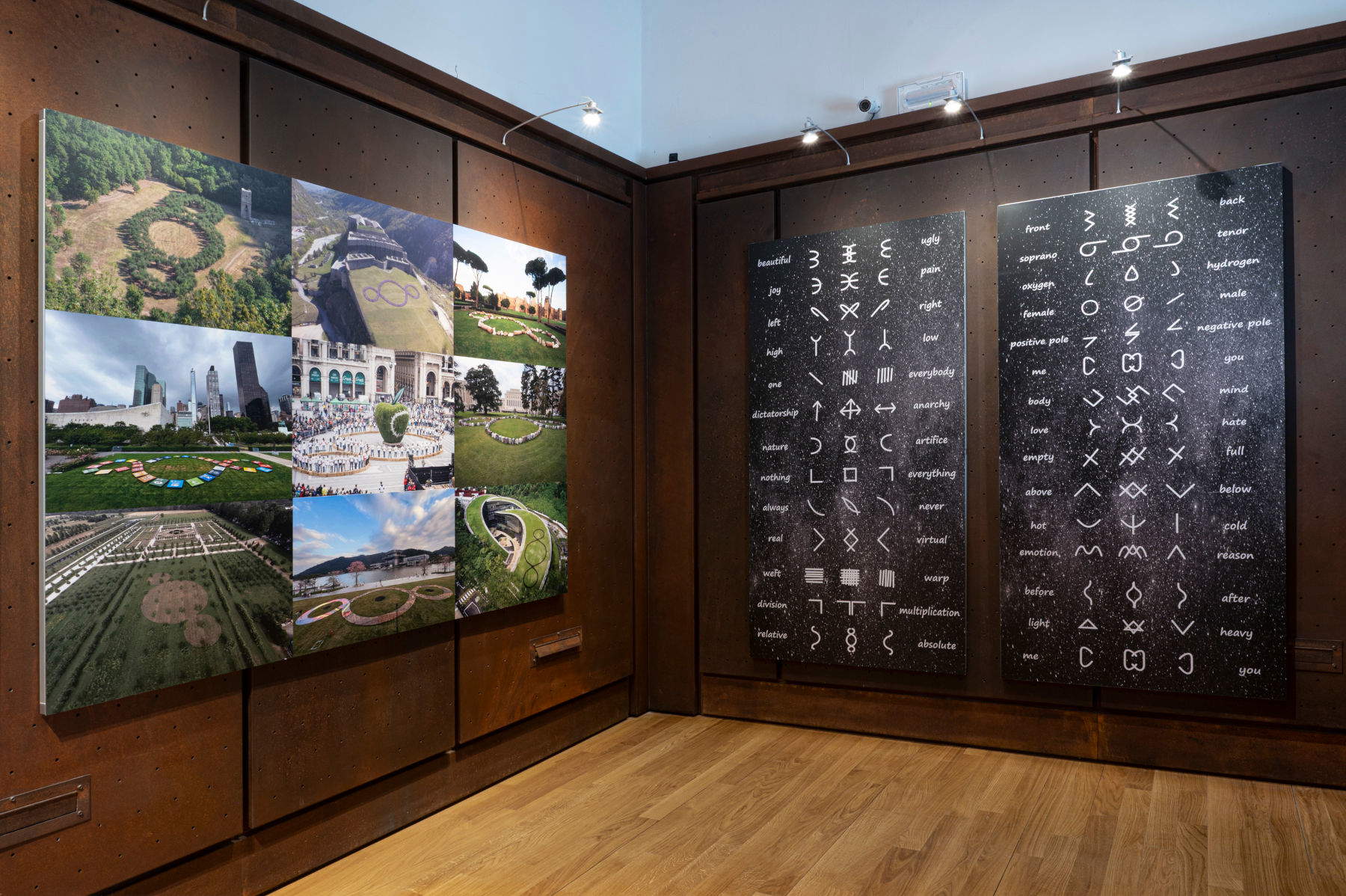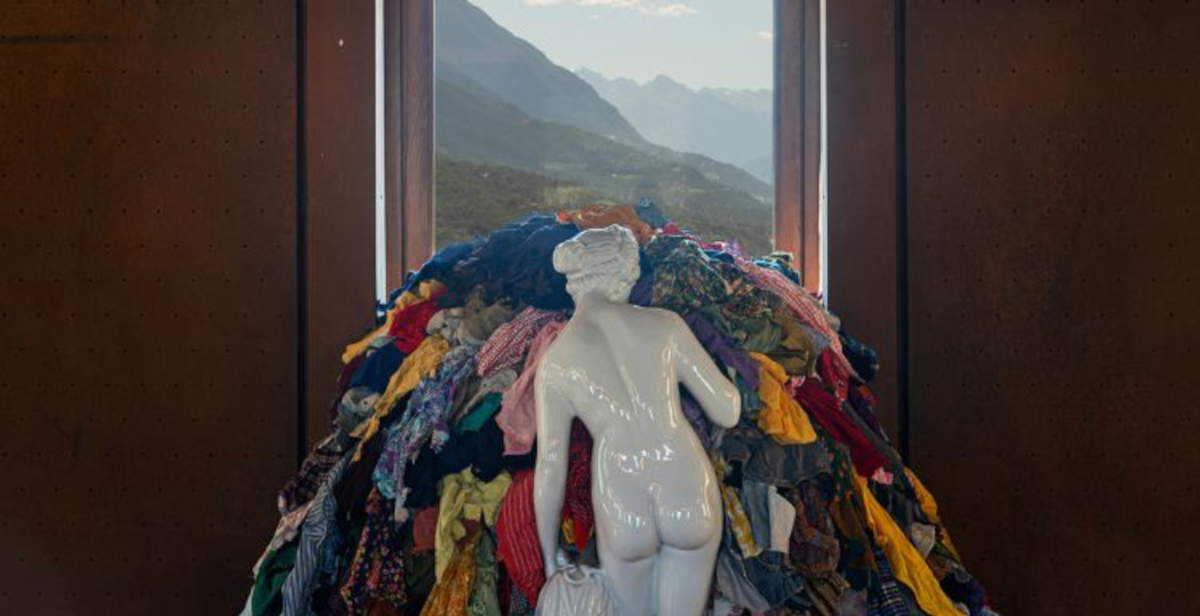From July 26 to September 28, 2025, the Gamba Castle-Museum of Modern and Contemporary Art of the Aosta Valley in Châtillon hosts the exhibition Glacial Threads. From Forests to the Fabrics of the Future, conceived by Michelangelo Pistoletto and realized by Cittadellarte in collaboration with the Region’s Structure for Historic-Artistic Heritage and Management of Cultural Sites. Curated by Fortunato D’Amico, the exhibition addresses the relationship between art, environmental sustainability and regenerative fashion, offering itself as a visual and conceptual platform to investigate contemporary ecological and social transformations, with a particular focus on the Alpine arc.
The exhibition grew out of the project Glacial Threads. From Forest to Future Textiles, promoted by the Austrian Lenzing Group, active in the production of specialty wood-based fibers. The initiative, carried out in synergy with Cittadellarte, aims to create textile materials that are completely free of microplastics and biodegradable, which are also used for covering glaciers. The goal is to reduce the environmental impact of the fashion industry, one of the most polluting globally, while contributing to the protection of glacial ecosystems, which are increasingly fragile due to climate warming.
"The conceptual incipit of Glacial Threads. From Forests to the Fabrics of the Future,“ says Fortunato D’Amico, curator of the exhibition, ”stems from an awareness that we can no longer ignore today: the progressive disappearance of glaciers and the urgent need for a collective assumption of responsibility to safeguard the environment. The layout of the exhibition shapes a path where Michelangelo Pistoletto’s works and those created by his organization, Cittadellarte, introduce a complex reflection on the life of materials, climate change and the impact of human actions that condition future developments. Art becomes an active tool of transformation: it enters territories, connecting people, communities, institutions and businesses, shaping a regenerative process that does not end within the confines of the museum, but expands into landscapes of change."

The exhibition itinerary is developed in three rooms of the museum, transformed into multisensory environments, where art installations, scientific content and interactive works combine to guide the visitor on a symbolic journey from forests, a paradigm of natural balance, to the “fabrics of the future,” conceived according to criteria of sustainability and circularity. The project is part of the cultural mission of the museum, which is gradually orienting its collection toward themes related to ecology and respect for the environment, thanks in part to recent acquisitions promoted by the regional administration. Michelangelo Pistoletto, for decades engaged in research that combines art, science and social responsibility, is among the protagonists of contemporary reflection on art as a tool for collective transformation. The artist proposes a vision in which creativity and environmental regeneration are intertwined, giving rise to forms of expression that act on an ethical and practical level. For Pistoletto, the artist is an agent of change, and art must pose as a vehicle for concrete solutions geared toward harmony between human beings and nature.
“The exhibition, by exploring the link between art, sustainability and technological innovation perfectly collides with the museum’s cultural mission,” says Viviana Maria Vallet, Director of Heritage and Cultural Sites Management and Scientific Coordinator Castello Gamba. “The critical strand of ecology, sustainability and respect for nature is indeed taking shape within the permanent collection thanks to a series of new acquisitions that the regional administration has promoted.”
Among the works featured, Metamorphosis explores transformation as a constant condition of human beings and society, engaging the public in a participatory dynamic through the use of mirrors and everyday materials. The work reflects on the construction of individual and collective identity in relation to the world around us. The Reintegrated Apple, on the other hand, takes up the archetypal symbol of the apple to propose a reflection on the relationship between nature and artifice: the bite that took away part of the fruit represents human intervention, while the work suggests an opposite gesture, aimed at the mending and reconnection between man and his natural habitat. The Tree of Ama, another installation, develops the dialectic between unity and fragmentation through the section of a trunk within which a mirror is inserted, returning a multiplicity of reflections. The work synthesizes the tension between the original identity and its successive ramifications. Also central is The Formula of Creation, a pivotal concept in Pistoletto’s thought, according to which the relationship between opposing elements can generate a “third subject”: a new entity, a symbol of rebirth and innovation, graphically represented by a circle, placed between two poles. The image becomes a metaphor for a renewed alliance between man and the environment.

Also on display is a selection of garments made with biodegradable fibers born from the collaboration between Cittadellarte - B.E.S.T. (Better Ethical Sustainable Think-Tank) and designers Blue of a Kind, Bav Tailor, Tiziano Guardini and Flavia La Rocca. The garments are displayed within Segno Arte structures, symbolic forms recurring in Pistoletto’s production. The garments are derived from textile materials used as cover for alpine glaciers, removed after two years and reinserted into the production cycle. The operation demonstrates the possibility of regenerative fashion, which not only reduces pollution but also actively contributes to the preservation of natural heritage. Completing the itinerary is the photographic work From Infinity to Creation, a reflection on the majesty and at the same time vulnerability of glaciers, which introduces a cosmic and spiritual dimension. The image suggests a point of contact between everyday life and the universe, between individual gesture and collective responsibility. International declinations of the Third Paradise, a concept developed by Pistoletto to identify a possible balance between nature and artifice, find space in the exhibition through documentations of interventions made in schools, cities, and communities.
The Glacial Threads project aims to cross-culturally engage culture, economy, environment and social relations, in line with the 17 Sustainable Development Goals of the United Nations 2030 Agenda. The initiative does not end with the exhibition alone, but also extends to a program of thematic lectures and workshops organized by the Cittadellarte Academy throughout the opening period of the exhibition. The exhibition catalog, published by Moebius, includes an interview with Michelangelo Pistoletto and critical essays by curator Fortunato D’Amico, and is available in three languages: Italian, English and French.
 |
| Michelangelo Pistoletto brings sustainability to Castello Gamba, Aosta Valley. |
Warning: the translation into English of the original Italian article was created using automatic tools. We undertake to review all articles, but we do not guarantee the total absence of inaccuracies in the translation due to the program. You can find the original by clicking on the ITA button. If you find any mistake,please contact us.